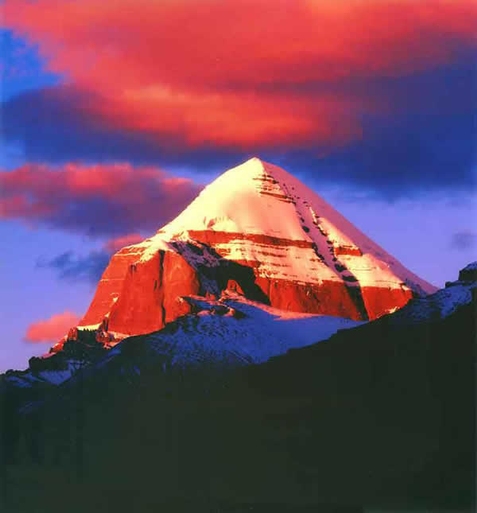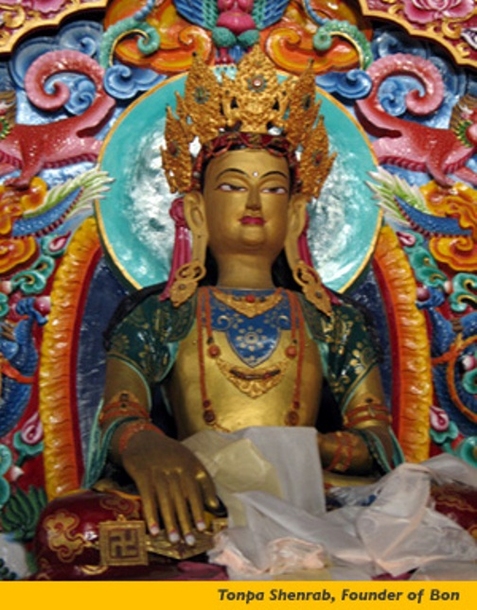www.bonpo-arts.com
Hauptmenü
- Homepage
- Bön
- Thangkas
- Tonpa Shenrab Miwoche
- Sherab Chamma
- Shenla Okar
- Tapirhitsa
- Drenpa Namkha
- Tsewang Rigdzin
- Sidpa Gyalpo
- Yeshe Walmö
- Sangchok Gyalpo
- Zhang Zhung Meri
- The emanation of the peaceful and wrathfull deities
- Gyuma Chenmo (Dream-Dakini)
- Seljé Dö Drelma (Sleep-Dakini)
- Thugje Khundul (Tummo-Dakini)
- 5 Elements (Element-Dakini)
- Statues
- What is Bon?
- Thangkas
- Books
- Projects
- Internet-Workshop
- Links
- Guestbook
- Contact
What is Bön?
Bön > What is Bon?
"Bon is Tibet's oldest spiritual tradition and, as the indigenous source of Tibetan culture, it has played a significant role in shaping Tibet's unique identity.
Consequently, I have often stressed the importance of preserving this tradition."
(His Holiness the XIV Dalai Lama)
"Bon is Tibet's oldest spiritual tradition.
It includes teachings and practices applicable to all parts of life, including our relationship with the elemental qualities of nature; our ethical and moral behavior; the development of love, compassion, joy, and equanimity; and Bon's highest teachings of the "Great Perfection," dzogchen.
According to the traditional Bon account of its origins, many thousands of years before the birth of the Buddha Shakyamuni, the Buddha Tonpa Shenrab Miwoche came to this world and expounded his teachings in the land of Olmo Lungring. Ol symbolizes the unborn, mo the undiminishing, lung the prophetic words of Tonpa Shenrab, and ring his everlasting compassion. Some modern scholars have identified Olmo Lungring with Zhang Zhung, the country surrounding Mount Kailash in Western Tibet and the cradle of Tibetan civilization.
Followers of Bon receive oral teachings and transmissions from teachers in a lineage unbroken from ancient times until the present day.
In addition, most of the scriptural texts also have been preserved.
While much in modern Bon is similar to Tibetan Buddhism, Bon retains the richness and flavor of its pre-Buddhist roots"
(Zit. Nach Tenzin Wangyal Rinpoche, Internet-Workshop;
Tibetan Soundhealing 2010)

"Bön ist die älteste spirituelle Tradition Tibets, die als ursprüngliche Quelle der tibetischen Kultur, eine maßgebliche Rolle in der Entwicklung Tibets einzigartiger Identität gespielt hat.
Infolgedessen habe ich oft betont wie wichtig es ist diese Tradition zu bewahren."
(Seine Heiligkeit der XIV Dalai Lama)
Bön ist die älteste spirituelle Tradition Tibet's.
Sie beinhaltet Lehren, die auf alle Bereiche des Lebens anwendbar sind, einschließend unserer Beziehung zu den elementaren Qualitäten der Natur, unseres ethischen und moralischen Verhaltens, und der Entwicklung von Liebe, Mitgefühl, Freude und Gelassenheit.
Die höchsten Lehren des Bön, sind die "Lehren von der Großen Vollkommenheit", die auch als Dzogchen-Lehren bekannt sind.
Laut der traditionellen Darstellung existierte die Bön-Tradition bereits tausende Jahre vor der Geburt des Buddha Shakyamuni.
Der Buddha Tonpa Shenrab Miwoche kam in diese Welt und brachte seine Lehren in das Land Olmo Lungring.
Ol symbolisiert das Ungeborene, mo das nicht Abnehmende, lung die prophetischen Worte Tonpa Shenrabs und ring sein niemals endendes Mitgefühl.
Einige Wissenschaftler unserer Zeit haben Olmo Lungring in Zhang Zhung erkannt, das Land das den Berg Kailas im Westen Tibet's umgibt.
Dort liegt der Ursprung der tibetischen Zivilisation.
Anhänger des Bön empfangen mündliche Belehrungen und Übertragungen von Lehrern aus einer Linie die von den alten Zeiten bis zum heutigen Tage ungebrochen fortgeführt wurde.
Zusätzlich konnten die meisten Texte bewahrt werden.
Obwohl ein Großteil des modernen Bön dem tibetischen Buddhismus sehr ähnlich ist enthält das Bön den Reichtum und die Besonderheiten seiner Vor-Buddhistischen Wurzeln.
(Zit. Nach Tenzin Wangyal Rinpoche, Internet-Workshop;
Tibetan Soundhealing 2010)
(First picture: Mount Kailash in Tibet;
Second picture: Statue of Tonpa Shenrab Miwoche
Menri-Monastery, Dolanji India;
www.garudaswitzerland.org)
